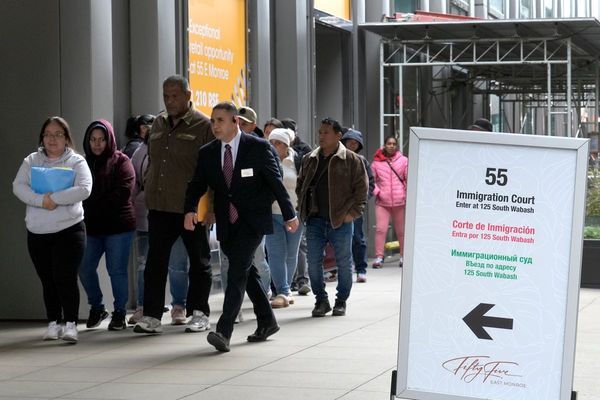
Most people remember when the housing bubble burst in the U.S., leading to the financial crisis of 2007-2008.
Bubbles occur when prices rise beyond a sustainable level, and they are a recurring phenomenon in real estate markets. But real estate prices pretty much always go up, and the existence of a bubble can’t really be proven until it bursts. One can only attempt to recognize the risk.
A new 2022 annual report by global financial services firm UBS (UBS) does just that. UBS’s annual Global Real Estate Bubble Index says that historical data reveals patterns of property market excesses. Typical signs, the report says, include a disassociation of prices from local incomes and rents, and imbalances in the real economy, such as excessive lending and construction activity.
The UBS index gauges the risk of a property bubble in 25 cities around the world, including five in the U.S., on the basis of these patterns.
Nominal house price growth in the 25 cities accelerated to 10% from mid-2021 to mid-2022, the highest increase since 2007. Four U.S. cities are among the top five with the fastest-rising prices. Valuations in Canadian and European cities also show elevated risks, the report says.
To determine the risks of a bubble, UBS scores each city on a weighted average of these five standardized city sub-indices:
- Price-to-income
- Price-to-rent
- Change in mortgage-to-GDP ratio
- Change in construction-to-GDP ratio
- Relative price-city-to-country indicator. (In Singapore, Hong Kong, and Dubai, this is replaced by an inflation-adjusted price index.)
The ranking determines whether a city is a “bubble risk,” “overvalued,” or “fair valued.” These are the world's biggest real-estate bubbles.
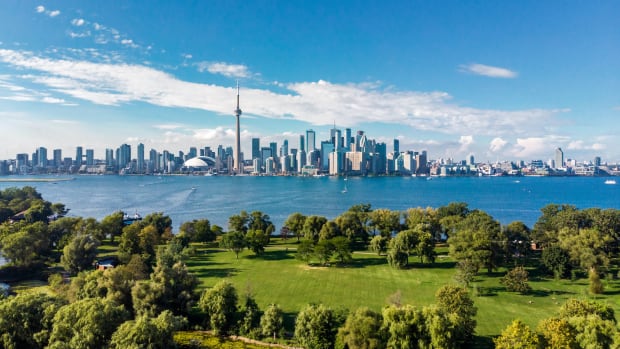
1. Toronto
- Bubble risk
- Toronto tops the index, exhibiting "pronounced" bubble characteristics. Real house price levels in Toronto have more than tripled in the past 25 years, and house prices are 17% higher than a year ago. With already stretched housing affordability, recent rate increases by the Bank of Canada “could be the last straw that broke the camel’s back,” the report says.

2. Frankfurt
- Bubble risk
- While property prices rose by just 5% between mid-2021 and mid-2022, this masks a steep rise: Housing prices are still more than 60% above their levels five years ago, leaving it in bubble risk territory.

3. Zurich
- Bubble risk
- Home prices in the Zurich economic region have gained roughly 20% since the start of the pandemic.

4. Munich
- Bubble risk
- In Munich, property prices more than doubled in nominal terms over the last decade. The housing market is supported by an ultra-low vacancy rate and a growing work force.
Shutterstock

5. Hong Kong
- Bubble risk
- It would take 24 years for a skilled service worker to buy a 650-square-foot flat near Hong Kong's city center, longer than any other city on this list.
Shutterstock

6. Vancouver
- Bubble risk
- Real house price levels in Vancouver have more than tripled in the past 25 years, and rose 14% from a year ago.

7. Amsterdam
- Bubble risk
- Amsterdam’s housing market saw the strongest price growth among the Eurozone cities analyzed. Prices rose 17% between mid-2021 and mid-2022 in nominal terms, leaving it a bubble risk. (It was No. 9 last year.)
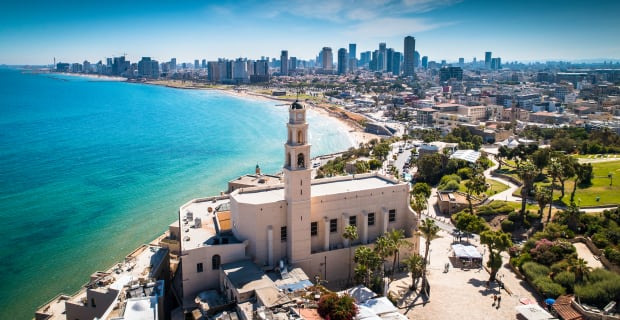
8. Tel Aviv
- Bubble risk
- Nominal house prices in Tel Aviv roughly tripled between 2001 and 2017. Between mid-2021 and mid-2022 alone, prices climbed by 18%.

9. Tokyo
- Bubble risk
- Real estate prices in Tokyo have increased almost continuously for over two decades--even during the pandemic--bolstered by attractive financing conditions and population growth. During this period, imbalances reached the “bubble risk” threshold from “undervalued” 20 years ago.
Shutterstock
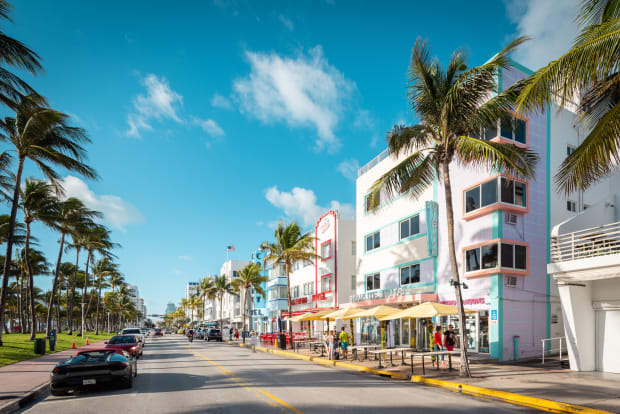
10. Miami
- Overvalued
- Inward migration and strong foreign investor interest are driving prices up in Miami--almost 50% above pre-pandemic levels, pushing the city further into “overvalued” territory.
- Although affordability in Miami has worsened sharply since 2019, UBS says it is still reasonable compared to the other U.S. cities analyzed.
Shutterstock

11. Los Angeles
- Overvalued
- September 2022 home prices in Los Angeles were up 3.8% compared to 2021, selling for a median price of $955,000, according to Redfin.
- Supply/demand imbalances are high in L.A. and have increased further since 2021, with unaffordability reaching a near all-time peak, according to UBS.

12. Stockholm
- Overvalued
- Tight monetary policy left a large number of potential buyers unable to qualify for mortgages, leading to a price slump in Stockholm of more than 10% in the second quarter of 2022, erasing all gains since summer 2021. This bumped Stockholm down from the “bubble risk” zone and into “overvalued” territory.

13. Paris
- Overvalued
- Unlike the other European cities on this list, nominal property prices in Paris stagnated between mid-2021 and mid-2022, moving it out of the “bubble risk” zone. In Paris, it would take 15 years for a skilled service worker to buy a 650 square-foot flat near the city center, the report says.

14. Sydney
- Overvalued
- The housing market in Sydney has remained outside “bubble risk” territory since a cool-down in 2018 and 2019, but prices surged by more than 30% in 2020 and 2021. Interest-rate increases have reduced affordability, and prices dropped by more than 5% during the second quarter of 2022.

15. Geneva
- Overvalued
- Negative interest rates and strong economic and population growth have triggered excessive price increases in Geneva over the past few years. The housing shortage here will likely persist, according to UBS.
Roman Babakin / Shutterstock

16. London
- Overvalued
- Between mid-2021 and mid-2022 nominal prices in London recorded a 6% gain, slightly topping a long-term average of 5%.

17. San Francisco
- Overvalued
- San Francisco recorded "strong price increases," according to UBS, which used data from the Federal Housing Finance Agency. Redfin says home prices are down 1.7% compared with last year, selling for a median price of $1.4 million. Realtor.com says the September 2022 median sold price was $1.3M, trending up 3.1% year-over-year.
- Subdued hiring in the tech industry and the prospect of continued remote and hybrid work models make the outlook for house prices in San Francisco the most subdued among U.S. markets in this ranking, UBS says.

18. Boston
- Overvalued
- Boston benefited from the highest income growth of all cities in the study on the back of its strong and diverse economy, UBS says, but not enough to offset the impact of higher interest rates and rising house prices.

19. Madrid
- Overvalued
- Property price growth in Madrid has accelerated since the onset of the pandemic, moving it into the “overvalued” territory, though a skilled service worker can still buy the most living space there among all Eurozone markets in the study.

20. New York
- Overvalued
- New York exhibited the lowest price growth since mid-2021 of all U.S. cities that UBS analyzed. It continues to trail more affordable tax-, business-, and regulatory-friendly cities and states. Regardless, the city remains the least affordable among U.S. cities covered. Redfin says prices have stayed the same since last year, with a median sale price of $800,000.

21. Singapore
- Overvalued
- Between mid-2021 and mid-2022, house prices in Singapore went up 11%.

22. Milan
- Fair-valued
- Incentives to renovate buildings have supported price growth in Milan after a decade of stagnating prices. Continuation of these incentives, the nearly completed extension of the underground railway, and the Olympic games in 2026 all contribute to sustaining valuations in the medium term.
Shutterstock
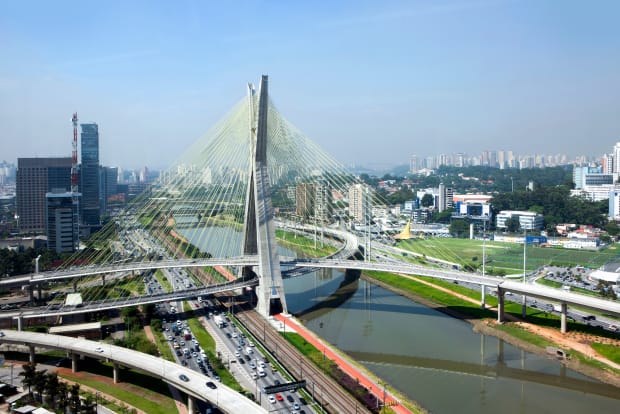
23. Sao Paulo
- Fair-valued
- The housing boom in Sao Paulo came to an end in 2014 as Brazil slid into a recession. Inflation-adjusted prices are roughly 25% lower than in 2014 and the market is “fair-valued.”

24. Dubai
- Fair-valued
- As oil prices surged, housing prices also increased by 10% between mid-2021 and mid-2022. That put the market only back to its 2019 price level, and still 25% below a 2014 peak, leaving it in “fair-valued” territory.
Shutterstock
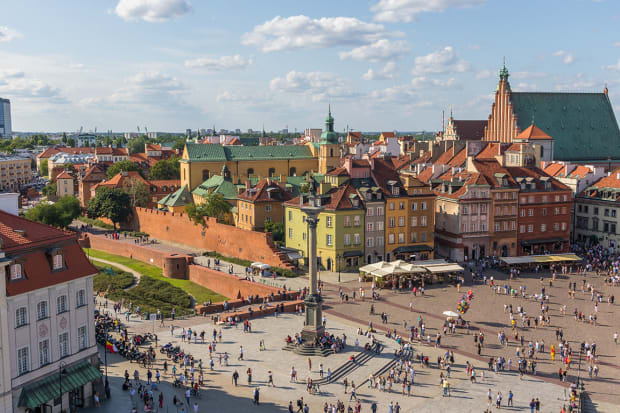
25. Warsaw
- Fair-valued
- Since 2018, housing prices in Warsaw have climbed by 10% annually driven by unprecedented excess demand. The city has had one of the strongest job markets in Eastern Europe, UBS says, with the boom luring new citizens and buy-to-let investors. The market is still "fair-valued" at this stage, but housing is becoming increasingly unaffordable.
Sirio Carnevalino / Shutterstock

